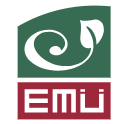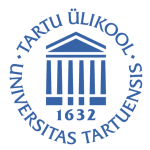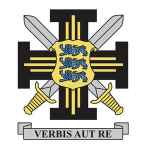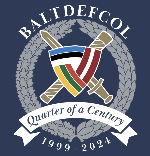Detailed introduction of Estonian University of Life Sciences:
Introduction and Overview
Geographical location: Located in Tartu, the second largest city in Estonia, Tartu is the university city and cultural center of Estonia, about 200 kilometers away from the capital Tallinn.
Student size: There are more than 5,000 students, of which postgraduates account for a high proportion, and the proportion of international students and staff is gradually increasing.
Discipline: It is the only university in Estonia that focuses on the sustainable development of natural resources and is committed to the protection of heritage and habitat environment. The disciplines cover forestry, agronomy, environmental science, zoology, botany, veterinary medicine, economics and social sciences.
History and establishment time
The history of the school can be traced back to the establishment of agronomy-related education when the University of Tartu was founded in 1632. After the University of Tartu reopened in 1802, a chair of agronomy was established.
In 1919, the University of Tartu established the Faculty of Agriculture. In 1951, the Estonian Academy of Agricultural Sciences was established on this basis. At that time, it was directly under the jurisdiction of the Soviet Ministry of Agriculture.
In 1991 After Estonia's independence in 1999, the college was renamed the Estonian Agricultural University and reorganized its departments.
In 2005, the school was renamed the Estonian University of Life Sciences and reorganized again.
School Strength
Faculty: It has 506 academic staff, including academicians of the Estonian Academy of Sciences and professors who have won the European Union Science Award.
Scientific Research Achievements: Its research in forestry, agronomy and engineering has reached the world's advanced level, and it publishes a large number of research papers every year. It is also one of the 1% most cited research institutions in the world.
International Exchange: It actively carries out international cooperation and has established cooperative relations with many foreign universities and institutions, such as signing a memorandum of cooperation with the National Central University to jointly work on the application of telemetry technology and space information technology in the environment, agriculture and forestry.
Nature of the institution
Public university.
Educational philosophy
It is committed to ensuring the sustainable use of natural resources and promoting urban and rural development. Through teaching, scientific research and practical activities, it cultivates students' professional knowledge and skills in the fields of natural resource protection, agriculture, forestry, animal science, etc., so that they can contribute to human survival and development.
Key laboratories and disciplines
Key disciplines: In 2024 In the QS World University Rankings by Subject, the school's agriculture and forestry major ranks 45th in the world's top 100. Its agriculture and forestry majors are strong, and it performs well in agronomy, forestry, veterinary medicine, environmental science and other disciplines.
Key laboratories: Although no specific key laboratories are explicitly mentioned, many of the school's institutes have undertaken a large number of scientific research projects, such as the relevant research centers of the Institute of Agronomy and Environmental Sciences, which provide important technical support and innovation power for the development of agriculture, environment and other fields in Estonia.
Faculty
The school has 3 institutes:
Institute of Veterinary and Animal Sciences: It consists of 7 departments and conducts high-level teaching, research and development activities in many disciplines related to animal science and veterinary medicine, such as animal nutrition, animal production, animal genetics and breeding, reproductive biology, biotechnology, food hygiene, food technology, etc. The institute offers a six-year long-term study program in veterinary medicine, and students can obtain a master's degree after graduation, and there are programs taught in English. In addition, the school also has an animal clinic to provide a practical education base for the training of a new generation of veterinary talents.
Institute of Agronomy and Environmental Sciences: It is the largest institute of the school, consisting of 11 departments and 3 research centers, attracting 5% of Estonia's research funding. The institute provides undergraduate, master's and doctoral education, covering academic activities such as plant cultivation, grassland cultivation and feed production, horticulture, plant protection, soil science and agricultural chemistry. It is also responsible for high-quality teaching and research in the fields of accounting, financial management, economics, entrepreneurship, etc. Its two international master's programs in landscape architecture and environmental governance and climate change adaptation are taught in English.
Institute of Forestry and Engineering: It consists of 8 departments. Its main task is to train professional talents for Estonia's forestry, environmental agency construction and water resources management departments, and provide undergraduate, master's and doctoral education. Its academic activities cover the fields of silviculture and forest ecology, forest management, forest and wood processing technology, water resources management, surveying and mapping, and rural construction, as well as agricultural engineering and energy. For example, popular majors such as renewable energy, the main research areas include integrated renewable energy solutions, energy process modeling, livestock farm technology and machinery, ergonomics of biotechnology systems, etc.
Ranking
In the 2024 QS World University Rankings by Subject, the school's agriculture and forestry major ranks 45th in the world.
In the 2022 Times Higher Education World University Rankings, it ranks in the 801-1000 range.
Expenses
Tuition fees for different majors vary. For specific tuition information, please refer to the school's official website or relevant admissions information.
Campus
Campus facilities: The campus building is located in the northwest of Tartu, next to the border of Thtvere Forest Park. A competition for a new gymnasium was held in 2007, and a new auditorium attached to the forestry building was built in 2008. The gymnasium is made of glass on the sunny side and surrounded by grass. The building has a unique appearance, simple interior colors and materials, bubble-shaped internal windows and round glass windows, good lighting and full of vitality.
Campus life: The school has its own folk dance troupe and other cultural and art groups, which enrich the students' extracurricular life. At the same time, the city of Tartu, where the school is located, has a strong cultural atmosphere, which also provides students with more cultural and entertainment options.
-

Estonian University of Life Sciences
-

Tallinn University of Technology
-

University of Tartu
-

Tallinn University
-

Estonian School of Diplomacy
-

Estonian Business School
-

Estonian Academy of Security Sciences
-

Estonian Academy of Arts
-

Institute of Theology of the EELC
-

Baltic Defence College
-

Mesoamerican University
-

Istmo University
-

Mariano Galvez University of Guatemala
-

Regional University of Guatemala
-

Galileo University
-

Francisco Marroquín University
-

Rafael Landívar University
-

University of the Valley of Guatemala
-

University of San Carlos of Guatemala
-

Technological Institute of Tlaxcala Plateau
-

Golfo University
-

Technological University of South Sonora
-

Technological University of Huejotzingo
-

Tizimín Institute of Technology
-

Chilpancingo Institute of Technology
